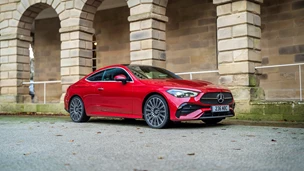Any manufacturer installing a three-cylinder turbo diesel has to be aware that under acceleration it won't be as smooth-running as a similar-capacity four, and the 1.5-litre engine in the Matrix certainly has a distinctive beat you don't get in the company's 1.6 and 1.8 petrol units.But Hyundai's mini-MPV is a well thought-out car in this class, thanks to the involvement of Pininfarina. The Italian styling house has created a roomy and ingenious interior, although I'm not so sure about those very deep - or is it tall? - windows in the rear cabin doors. Hyundai says they provide better visibility; but just how much elbow-level visibility there do you need? And I'd rather people couldn't see exactly what I'm having for a rear-seat picnic.The Matrix is based on the Elantra platform, although you'd never know except for the long wheelbase compared with the bumper-to-bumper length of the mini-MPV bodywork. It's compact front to rear, but very spacious inside, with generous headroom, plenty of rear seat legroom and foot room, and a sizeable luggage volume too. The high seating positions allow for a good all-round view, as well as easy access and exit.Available only in Europe - and, of course, banned for the moment in its home market in Korea, where passenger-car diesels still have some time to go before they're allowed on the road - the turbo diesel is sold here only in the GSI specification, which doesn't go as far as the leather trim or sunroof of the CDX, but is generally well kitted out. Alloy wheels, air-conditioning and front and side airbags are standard throughout the range.Both sections of the 60/40-split rear seat fold down, and they can be slid independently fore and aft. There are fold-up picnic tables and magazine pockets in the front seat backs, plenty of other stowage spaces including a pull-out tray under the front passenger seat, cupholders all over the shop, a space to keep a drinks bottle upright, a sunglasses holder in the roof lining, and two 12-volt power sockets.For serious load carrying, the luggage area has tie-down hooks and a retaining net, and there are underfloor storage spaces there too.Pininfarina has come up with an unusual front cabin design. All the instruments are in a large and deep-cowled display in the centre of the fascia top, while the panel in front of the steering wheel simply houses the warning lights. The Matrix has a much better fascia trim texture than some previous Hyundai models. It's hard plastic, but it really does look very much like leather.The Italians have not, however, been able to convince Hyundai to swap the action of the steering wheel stalks for UK-market cars, and they're still the "wrong way round".With no wasted exterior space or long overhangs, the Matrix is easy to park and potter along in town traffic. Out on the open road - well, a car that has to be wellied to get from 0-62mph in under 18 seconds must appear on paper to be pretty feeble.Once it's up and running, though, the CRDT doesn't feel like that, thanks partly to a decent torque figure of 136lb/ft. It can tackle climbs smartly enough, and doesn't seem sluggish, although there's always that three-pot diesel throb when it's being pushed on.The key advantages, though, are the excellent packaging, the generous space for passengers and luggage, and the independently sliding rear seats. This is Hyundai's first mini-MPV, and it did the wise thing in collaborating with an experienced European design house.For buyers who don't fancy a three-pot diesel, of course, there are the larger petrol options, and the 1.6 GSI manual comes till the end of 2003 with a £1000 price reduction which puts it on the road at £9995. Something to think about.

Our Rating



